Top Distributed Tracing Tools [updated for 2025]
Distributed tracing tools are essential in modern software development and operations for monitoring, troubleshooting, and optimizing complex distributed systems.
The best tracing tools can help you eliminate performance bottlenecks and recover from incidents faster. Use this guide to pick the right one for you.
What is a distributed tracing tool?
Distributed tracing tools are useful in microservices architectures, where applications consist of multiple loosely coupled services that interact over the network.
Tracing tools provide visibility into the end-to-end flow of requests across services, helping developers and operators understand system behavior, troubleshoot issues, and ensure optimal performance and reliability.
Tracing software offers interfaces for querying, analyzing, and visualizing trace data. These interfaces can be used by developers to identify performance bottlenecks, diagnose issues, understand dependencies between services, and optimize system behavior.
Why do you need a tracing tool?
Get a centralized view. Tracing provides a single view of your distributed microservices. Your team can more easily understand how an application is built and how services interact with each other.
Visualizing Bottlenecks. The collected trace data collected is visually presented through timelines or graphs, enabling developers to identify performance bottlenecks and slow services by observing the duration of each step in each microservice.
Alerting and Monitoring. Certain distributed tracing tools provide alerting and monitoring capabilities, enabling operators to establish alerts based on predetermined thresholds or conditions. This facilitates proactive monitoring and response to system performance degradation or errors.
Faster Debugging. Tracing tools can significantly reduce debugging time by visualizing the entire request flow. This allows developers to quickly locate the source of errors or slowdowns.
Dependency Mapping. Maintaining and evolving distributed systems requires a clear understanding of service dependencies. Distributed tracing tools offer dependency maps that visualize service relationships. These maps help developers and operators comprehend their application architecture and make informed decisions about changes and upgrades.
Open source tracing tools
Uptrace
Uptrace is an OpenTelemetry APM that helps developers pinpoint failures and find performance bottlenecks. Uptrace can process billions of spans on a single server, allowing you to monitor your software at 10x less cost.
Uptrace aims to simplify the process of monitoring and troubleshooting distributed systems by providing a comprehensive tracing and observability platform.
You can get started with Uptrace by downloading a DEB/RPM package or a precompiled Go binary. l 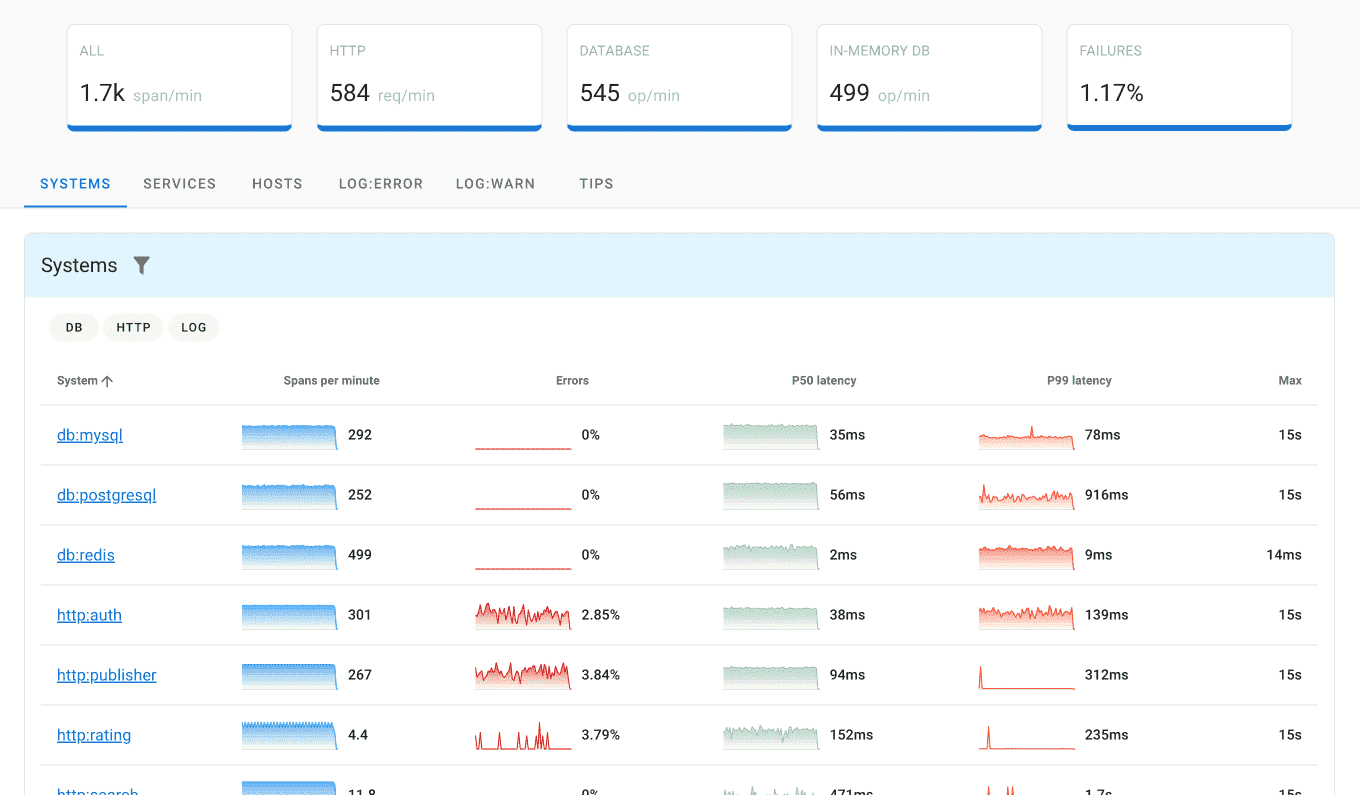
Tech stack:
- Backend: Go
- Frontend: Vue.js
- Instrumentation: OpenTelemetry (OTLP), Vector, FluentBit, AWS CloudWatch, Prometheus Remote Write
- Storage: ClickHouse and S3
Pros:
- Tracings, logs, and metrics
- Rich UI with charts
- Advanced filtering capabilities
- Simple setup with ClickHouse being the only dependency
- OpenTelemetry support including pre-configured distributions
Cons:
- ClickHouse is the only supported DBMS
SigNoz
SigNoz is an open-source APM. It helps developers monitor their applications & troubleshoot problems.
SigNoz provides a unified UI for metrics and traces so that there is no need to switch between different tools such as Jaeger and Prometheus.
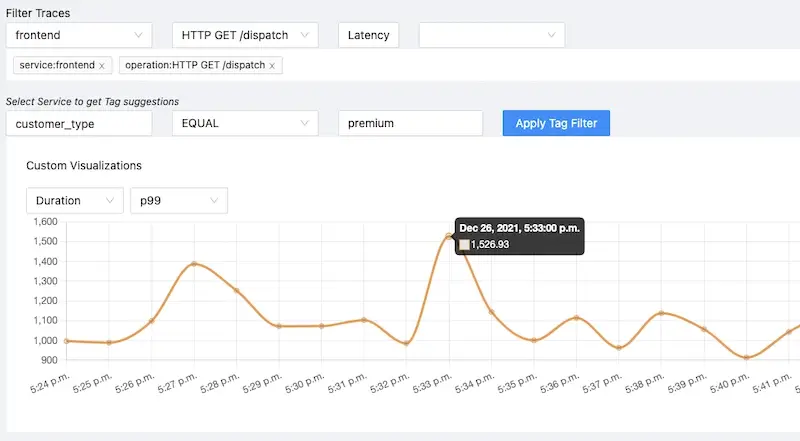
Tech stack:
- Backend: Go
- Frontend: React
- Instrumentation: OpenTelemetry / OTLP
- Storage: ClickHouse
Pros:
- Native OpenTelemetry support
- Rich UI with charts
- Metrics support using Prometheus as a backend and custom UI
- Traces visualization using Flamegraphs and Gantt charts
- Filters based on tags, status codes, service names, operation, etc.
- Alarms
Jaeger
Jaeger is a distributed tracing platform created by Uber Technologies. It can be used for monitoring microservices-based distributed systems.
Jaeger provides visibility into the flow of requests across microservices, allowing developers to understand the performance and behavior of their applications. It is used to gather timing data and logs from different services, and present them in a single view to help developers identify performance bottlenecks and errors.
Jaeger's scalability is limited by the performance of its backend storage, which can become a bottleneck in highly distributed and high-traffic systems.
Compared to some commercial tracing tools, Jaeger has a more limited feature set, including fewer integrations, alerting capabilities, and analytics tools.
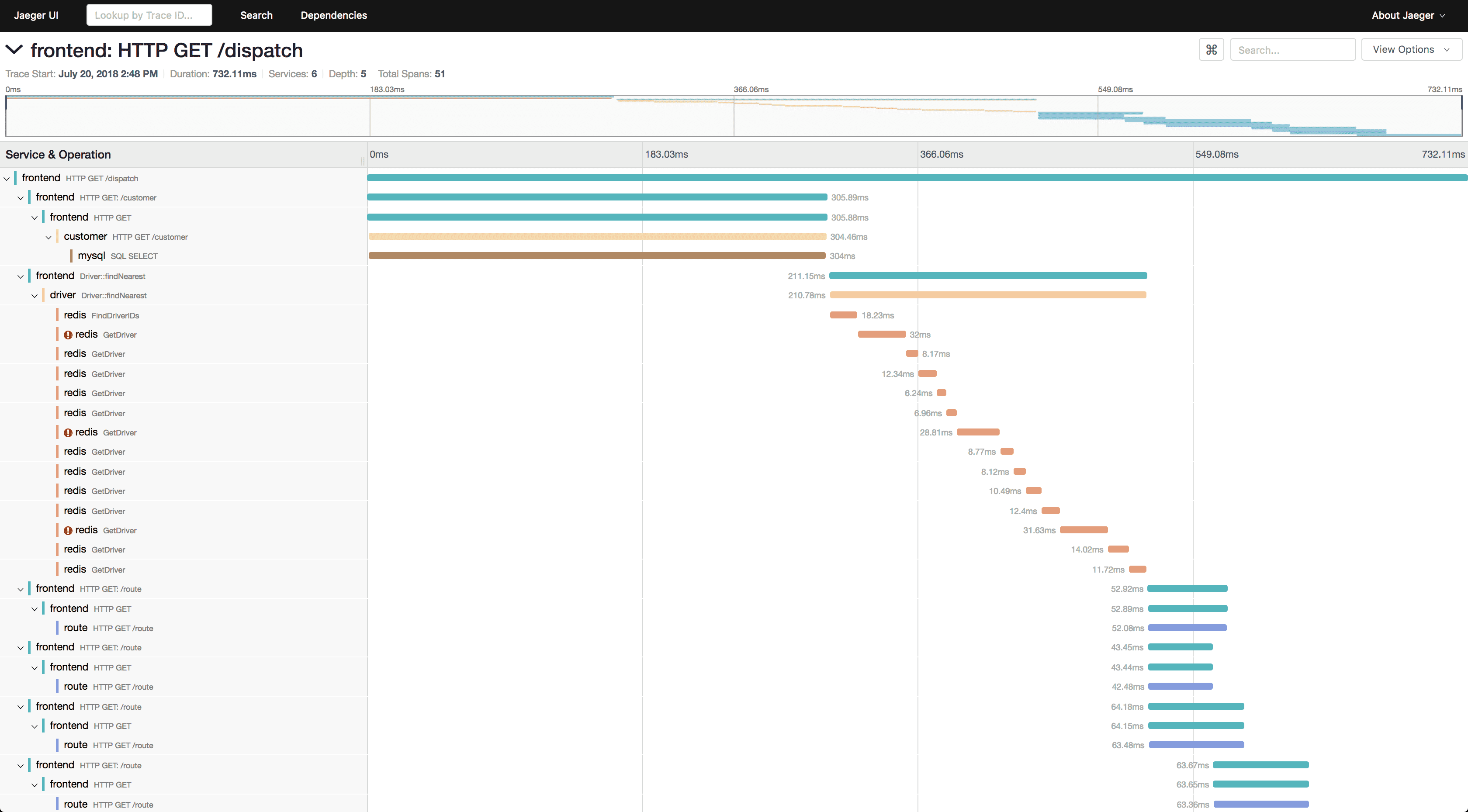
Tech stack:
- Backend: Go
- Frontend: React
- Instrumentation: OpenTelemetry / OTLP
- Storage: Cassandra, Elasticsearch; ClickHouse using a plugin
Pros:
- Stable and well-known project
- Adaptive sampling
- Support for multiple DBMS via plugins
- Sponsored by CNCF
Cons:
- No charts / percentiles
- Limited filtering capabilities
- Not all plugins are maintained and usable
Sentry
Sentry tracks your software performance, measures metrics like throughput and latency, and displays the impact of errors across multiple systems.
Sentry provides detailed crash reports, including stack traces, user information, and logs, to help developers diagnose and resolve issues quickly.
Sentry includes features like notifications, prioritization, and collaboration tools to help teams work together to resolve issues. By providing a centralized view of all errors, Sentry can help teams improve the quality and stability of their applications.
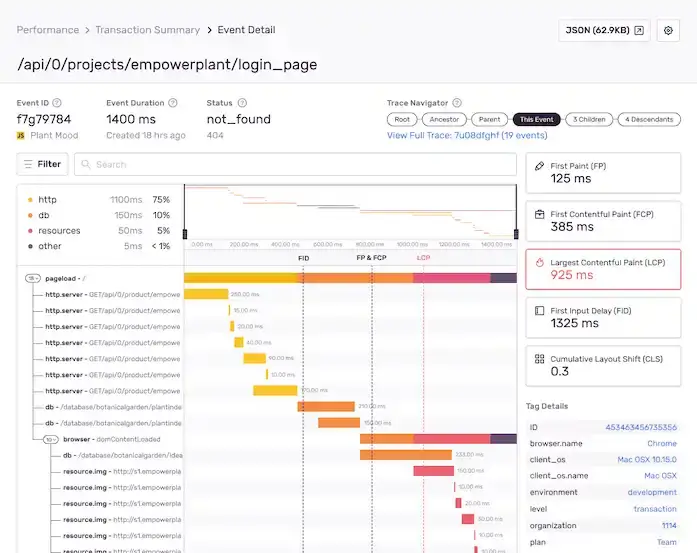
Tech stack:
- Backend: Python
- Frontend: React
- Instrumentation: Sentry SDK
- Storage: Kafka, Redis, PostgreSQL, ClickHouse
Pros:
- Excellent errors monitoring
- Quality SDK for Go, Python, Ruby, .NET, and PHP
- Friendly UI
Cons:
- Complex setup
- No OpenTelemetry support
- The UI is built around errors monitoring
SkyWalking
SkyWalking is an open source APM system, including monitoring, tracing, diagnosing capabilities for distributed system in Cloud Native architecture.
SkyWalking provides a comprehensive solution for monitoring and analyzing the performance and behavior of modern applications, helping teams to identify and resolve issues before they impact end users.
SkyWalking provides features such as distributed tracing, application performance management (APM), and service mesh observability, all of which can be used to gain insights into the behavior and health of your applications.
SkyWalking also provides a centralized dashboard to visualize data, as well as alerts and notifications to alert teams to potential issues.
SkyWalking's feature set may not be as comprehensive as some commercial APM tools, including fewer integrations, alerting capabilities, and analytics tools.
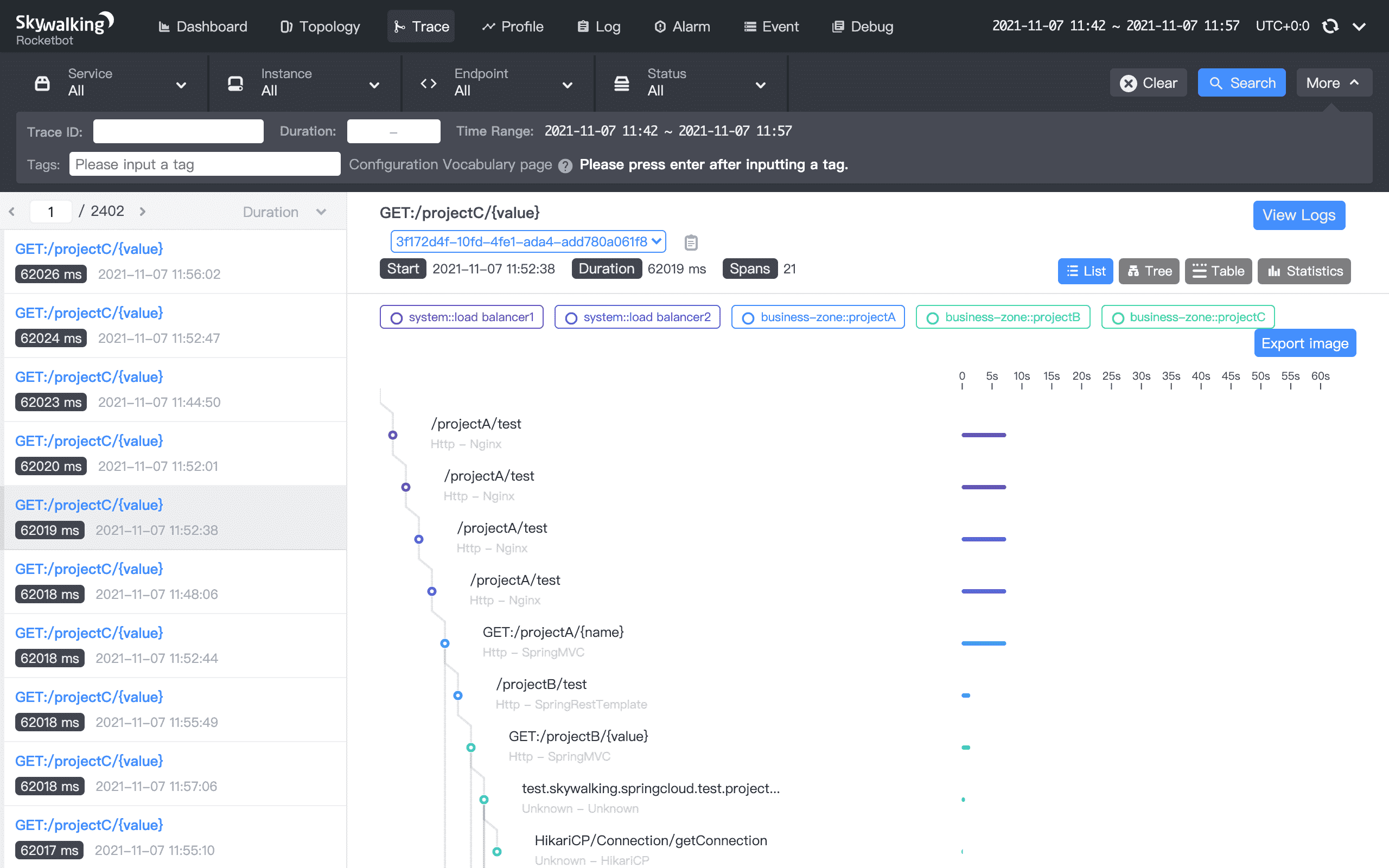
Tech stack:
- Backend: Java
- Frontend: Vue.js
- Instrumentation: SkyWalking
- Storage: ElasticSearch, MySQL, TiDB, InfluxDB, and more
Pros:
- Rich UI with charts
- Good metrics support (including dashboards)
- Alarms
- Support for multiple DBMS
Cons:
- Complex setup
- Complex and overloaded UI
- Confusing tracing UI
- OpenTelemetry support requires OpenTelemetry Collector
Zipkin
Zipkin is an open-source distributed tracing system that helps to gather data on the interactions between microservices in a distributed system.
Zipkin provides a way to visualize the flow of requests and responses between services, as well as the performance characteristics of each request, such as latency and response times.
Zipkin's key feature is the ability to trace a request as it flows through multiple microservices. This information can be used to gain insights into the performance of each service and the interactions between them, helping teams to identify and resolve performance and stability issues.
Zipkin's UI is minimalistic, but you can replace it with Grafana/Kibana configured to work with Zipkin data source.
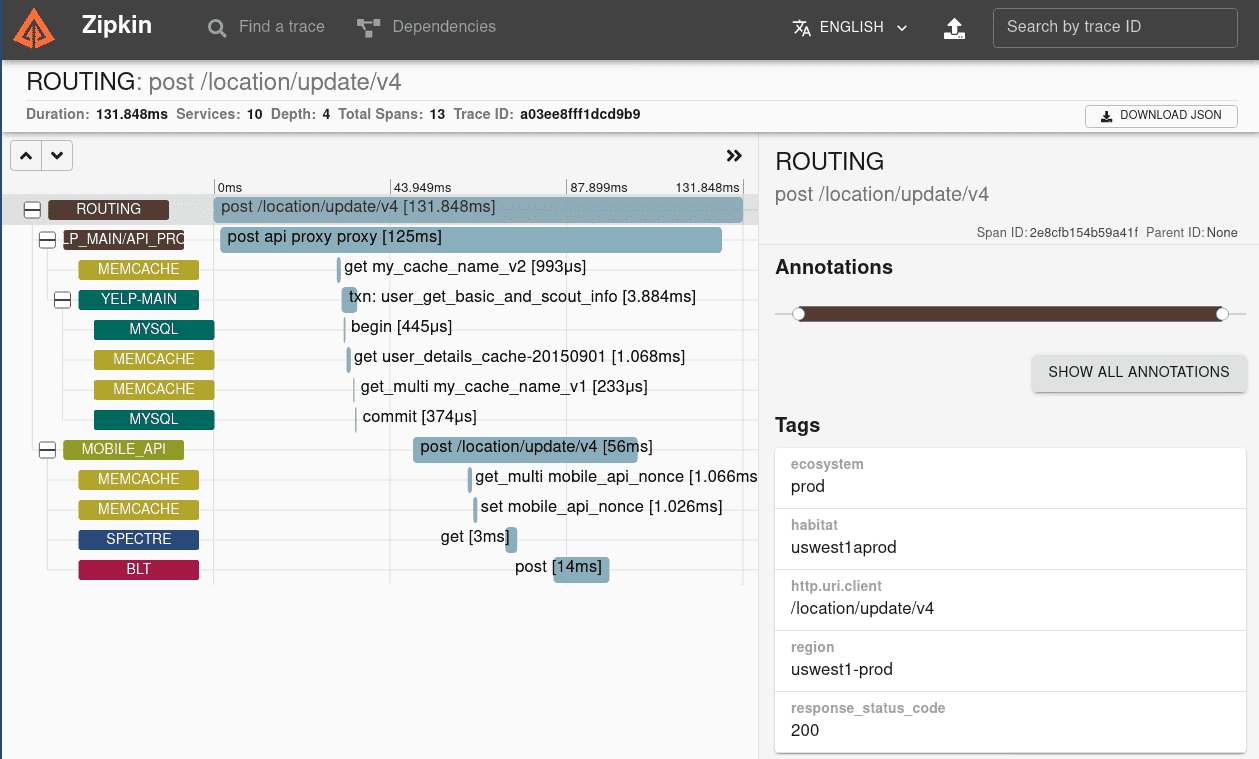
Tech stack:
- Backend: Java
- Frontend: React
- Instrumentation: Zipkin span model; OpenTelemetry via adapter
- Storage: MySQL, Cassandra, or Elasticsearch.
Pros:
- Stable and well-known project
- Support for multiple DBMS
Cons:
- No active development
- Limited UI and filtering capabilities
- OpenTelemetry support requires an adapter
- No ClickHouse support
Grafana Tempo
Grafana Tempo is an open source, easy-to-use, and high-scale distributed tracing backend.
Tempo is designed to work seamlessly with Grafana, providing a complete solution for observability of distributed systems and microservices.
Tempo is cost-efficient, requiring only object storage to operate, and is deeply integrated with Grafana, Prometheus, and Loki. Tempo can ingest common open source tracing protocols, including Jaeger, Zipkin, and OpenTelemetry.
Tempo is optimized for high performance and can handle large amounts of tracing data, making it well-suited for use in large, complex systems. It provides a highly scalable, high-availability backend for storing, querying, and visualizing tracing data.
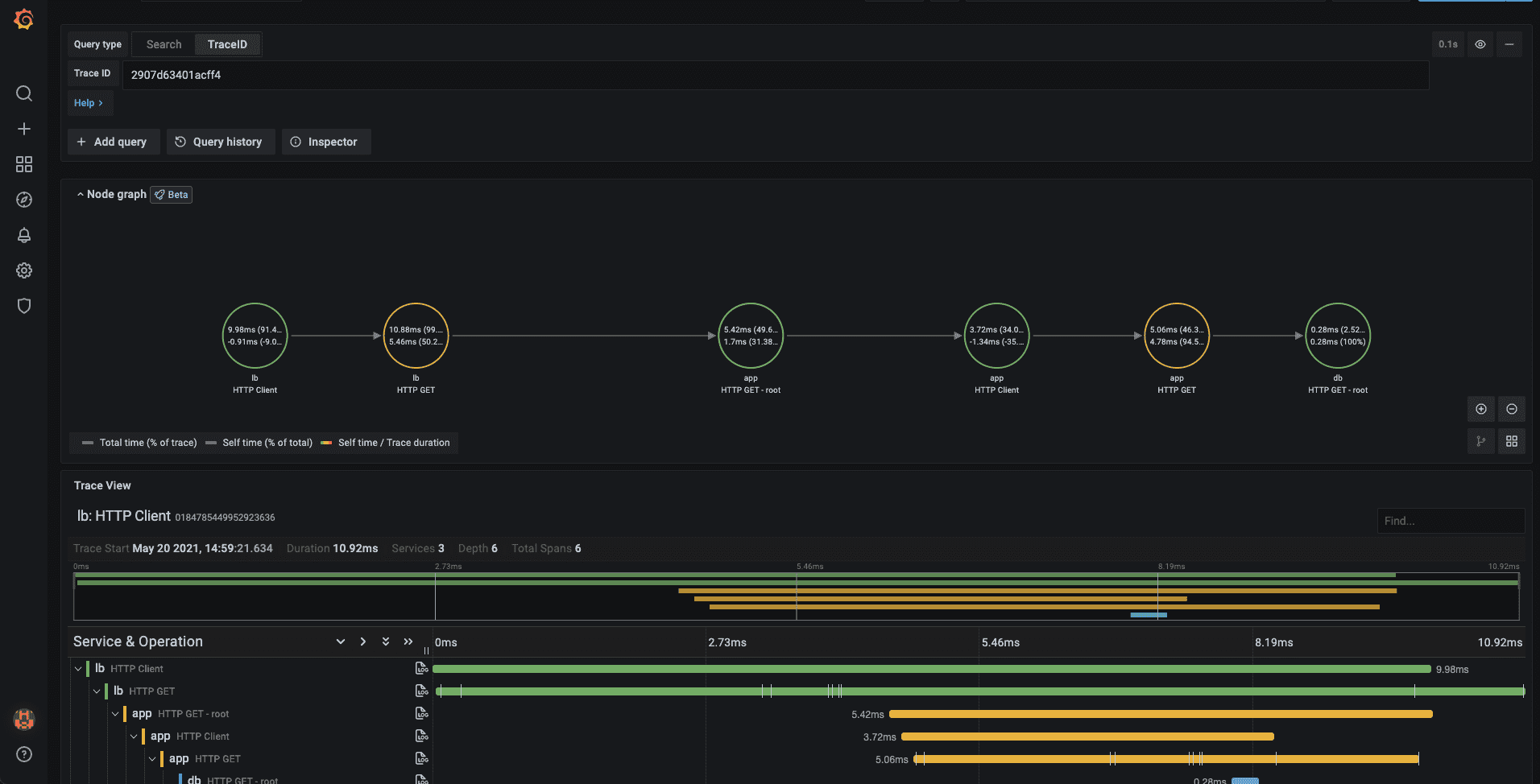
Tech stack:
- Backend: Go
- Frontend: React
- Instrumentation: OpenTelemetry / OTLP
- Storage: Grafana Tempo
Pros:
- Integration with Grafana metrics dashboard
- OpenTelemetry support
Cons:
- The UI is built around metrics and feels awkward / clumsy for everything else
- Limited filtering capabilities
OpenTelemetry
OpenTelemetry is an open-source observability framework that provides a vendor-neutral, standard way of collecting, processing, and exporting telemetry data, including distributed traces, metrics, and logs.
OpenTelemetry supports several popular backends for storing and analyzing trace data, including Uptrace, Jaeger, Zipkin, and Prometheus. It also provides integrations with cloud platforms, such as AWS, GCP, and Azure, to facilitate the collection and analysis of telemetry data in cloud-native environments.
OpenTelemetry tracing is one of the core features of the framework, which allows developers to trace requests and transactions across distributed systems. OpenTelemetry tracing provides end-to-end visibility into the path of requests, their latency, and the interactions between different components of the system.
Conclusion
Distributed tracing tools are essential for understanding, monitoring, troubleshooting, and optimizing complex distributed systems. They offer visibility into system behavior, help identify performance issues, aid in debugging, and ensure the reliability and scalability of distributed applications.
When choosing a distributed tracing tool, consider factors such as ease of integration, support for your programming languages and frameworks, scalability, analysis capabilities, and pricing.
Additionally, think about how the tool fits into your existing observability stack, as many organizations use a combination of tracing, metrics, and logs to gain a comprehensive view of their applications.
For complete observability, organizations need both distributed tracing and comprehensive infrastructure monitoring. This multi-layered approach provides both the detailed transaction view and the underlying resource status.
You may also be interested in: